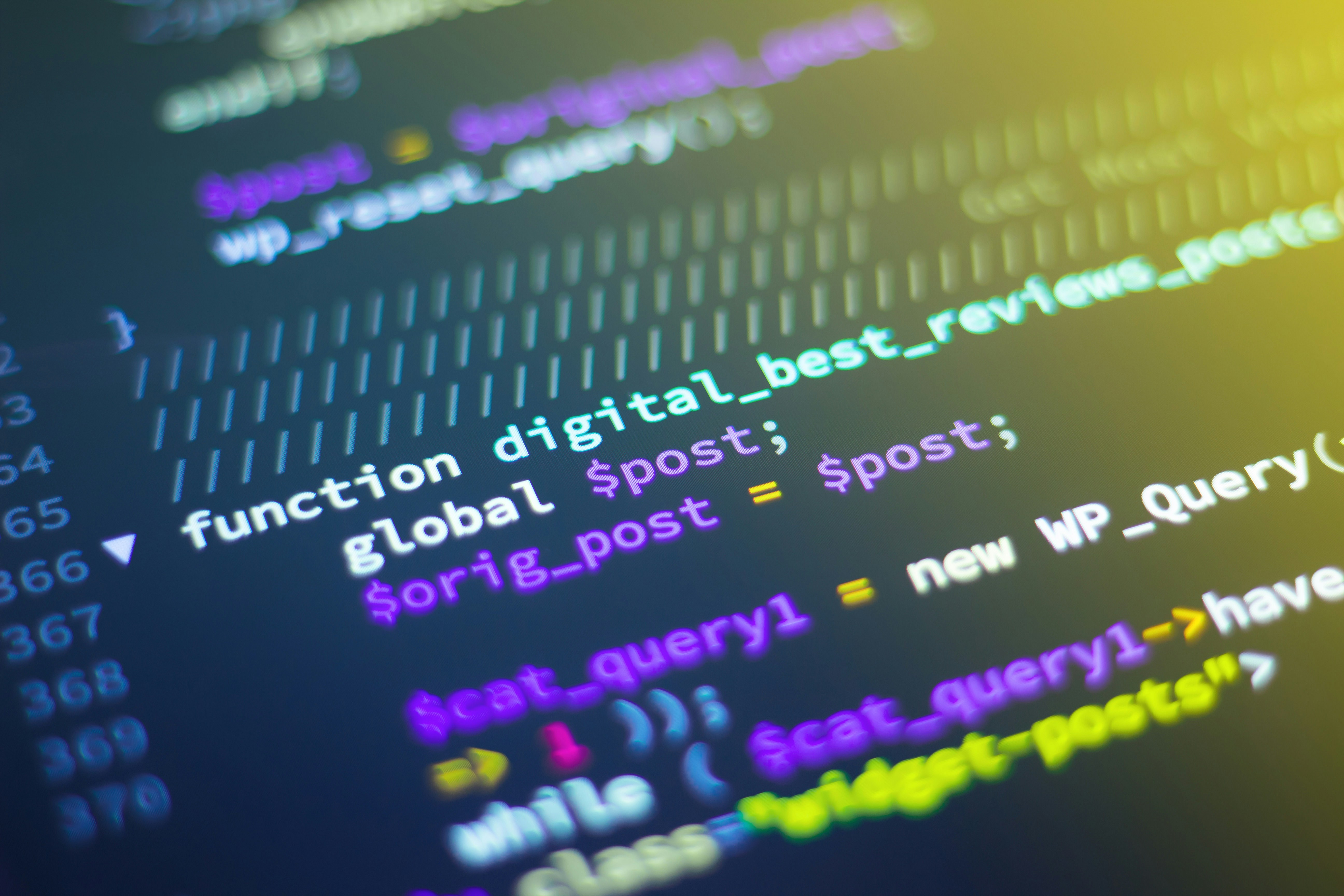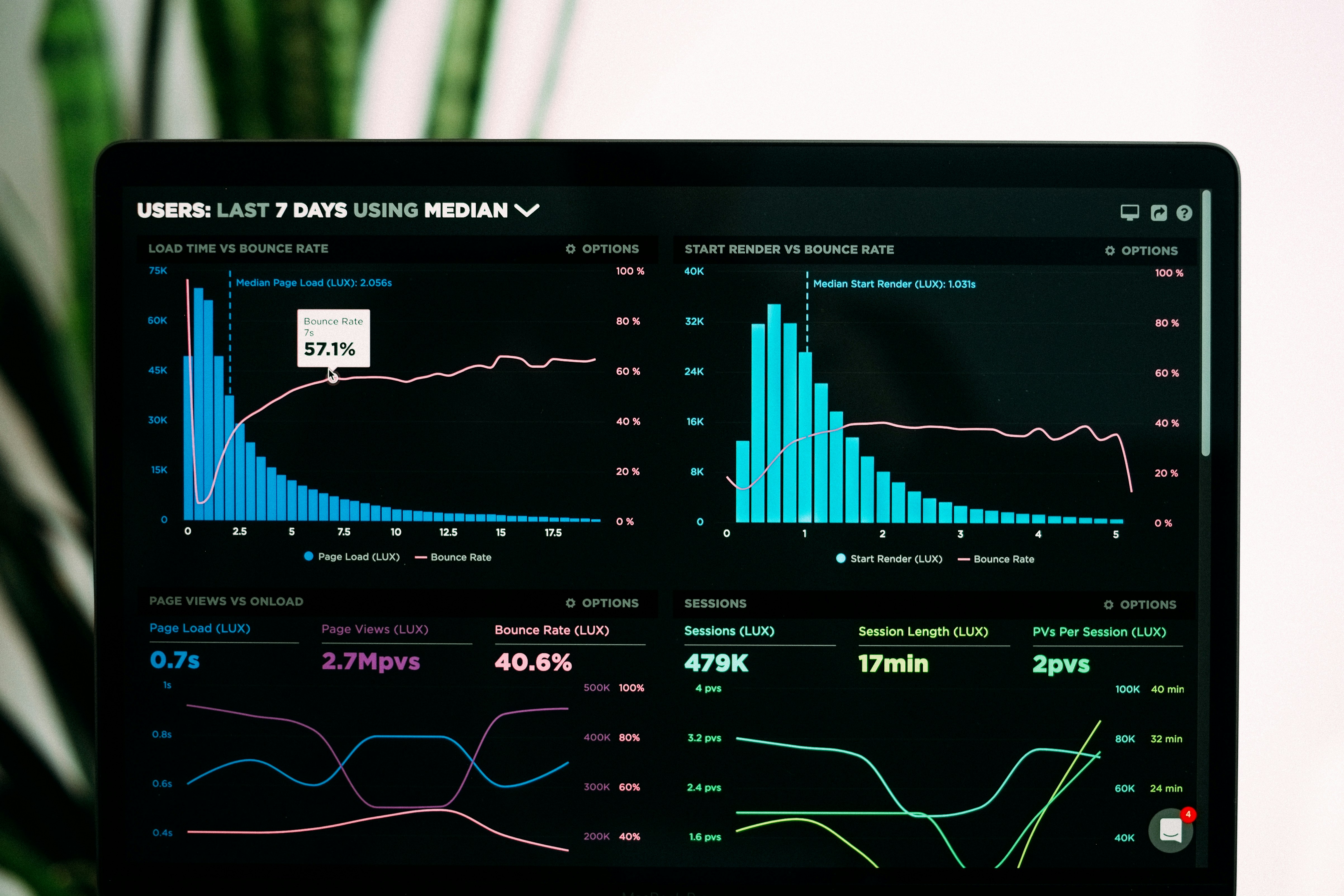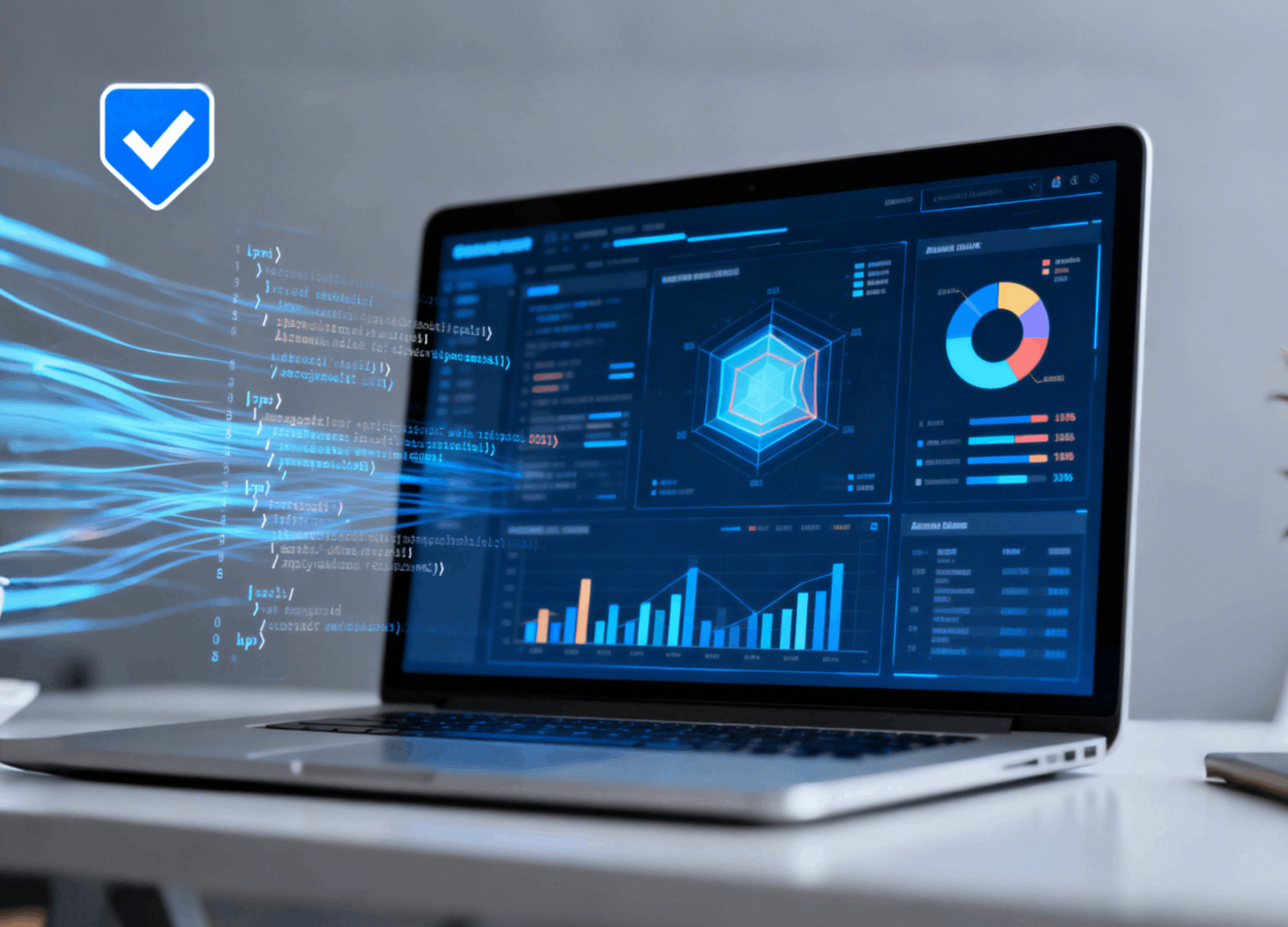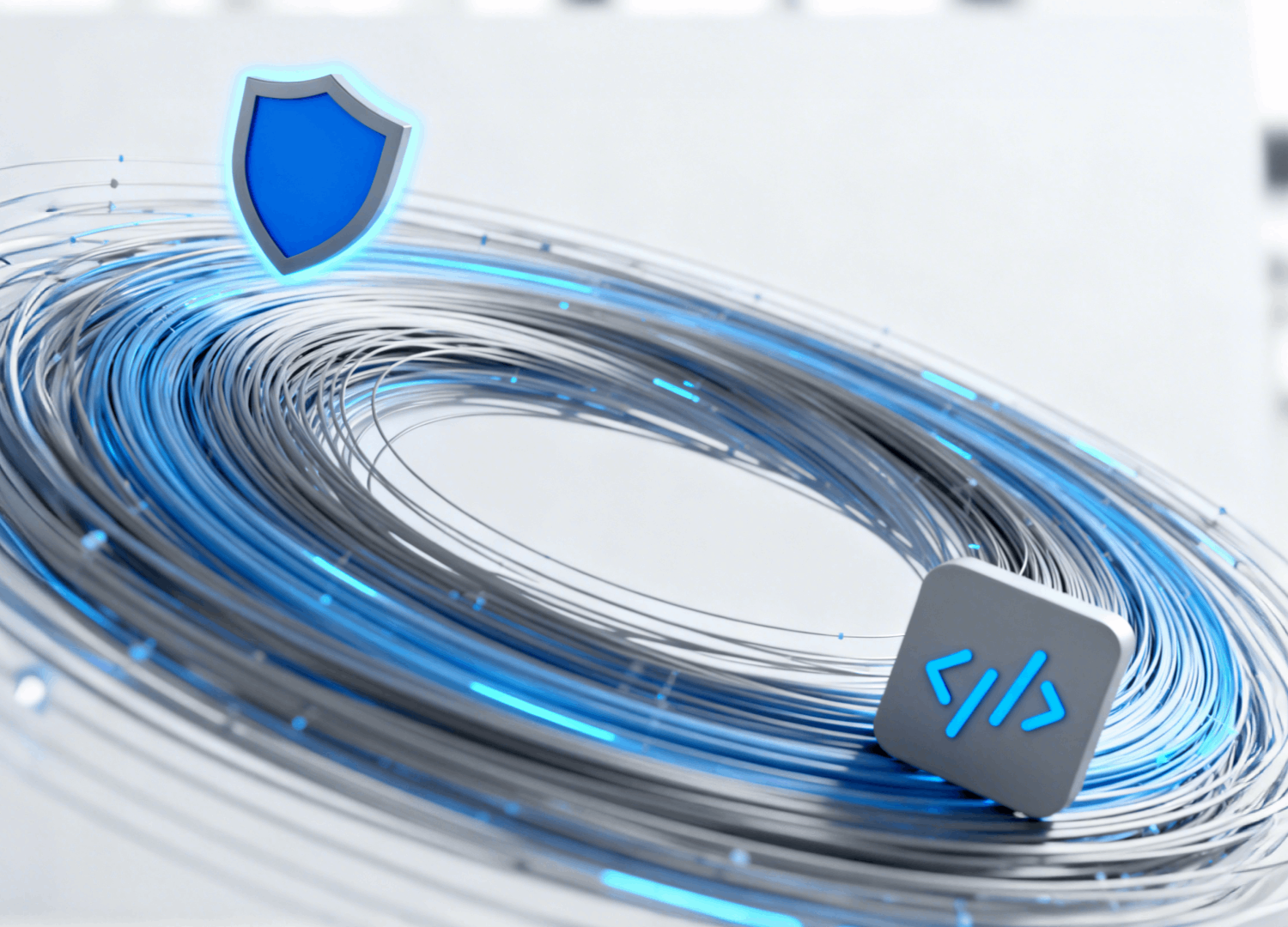AI Code Detector: How to Identify AI-Generated Code in 2024
In today's rapidly evolving technological landscape, artificial intelligence has transformed the way developers write code. While AI-powered coding assistants like GitHub Copilot, ChatGPT, and other generative AI tools have boosted productivity, they've also introduced new challenges for educators, employers, and open-source maintainers. The need to distinguish between human-written and AI-generated code has never been more critical. This is where an AI code detector becomes essential. At aigcchecker.com, we provide cutting-edge solutions to help you identify AI-generated code with remarkable accuracy, ensuring code integrity across academic, professional, and collaborative environments. The proliferation of AI coding tools has fundamentally changed software development practices. These intelligent systems can generate complete functions, debug existing code, and even architect entire applications based on natural language prompts. However, this convenience comes with important considerations around originality, learning assessment, and code quality assurance. An AI code detector is a specialized analytical tool designed to examine source code and determine the likelihood that it was generated by artificial intelligence rather than written by a human programmer. These sophisticated systems utilize machine learning algorithms, pattern recognition, and linguistic analysis to identify telltale signatures of AI-generated code, including structural patterns, commenting styles, variable naming conventions, and algorithmic approaches that differ from typical human coding behaviors. The importance of AI code detection extends across multiple domains. In educational settings, instructors need to ensure students are genuinely learning programming concepts rather than simply prompting AI tools. In professional environments, companies must verify that proprietary code meets originality standards and doesn't inadvertently incorporate AI-generated content that might carry licensing implications. Open-source communities benefit from understanding code provenance to maintain contribution quality and authenticity. Modern AI code detector systems employ multiple analytical approaches to achieve accurate identification. Understanding these methodologies helps users appreciate the technology's capabilities and limitations. AI-generated code often exhibits distinctive statistical patterns. Machine learning models trained on vast datasets of both human-written and AI-generated code can identify subtle differences in code structure, complexity metrics, and stylistic consistency. These detectors analyze factors such as cyclomatic complexity, nesting depth, function length distribution, and the frequency of specific programming constructs. Just as writing style reveals authorship in natural language, coding style provides valuable clues about code origin. AI code detectors examine comment quality and placement, variable naming patterns, code formatting consistency, and documentation approaches. AI-generated code frequently displays unnaturally consistent formatting, generic variable names, and comment patterns that differ from human conventions. Advanced detection systems evaluate the semantic relationships within code. They assess whether the programming logic flows naturally from problem to solution or exhibits the characteristic "optimization-first" approach common in AI-generated code. The detector also examines how well comments align with code functionality and whether explanations demonstrate genuine understanding or merely surface-level descriptions. When selecting an AI code detector, several critical features distinguish superior solutions from basic alternatives. The platform at aigcchecker.com exemplifies these essential capabilities. Comprehensive detection systems support multiple programming languages including Python, JavaScript, Java, C++, Ruby, and more. Language-specific patterns require specialized training data and detection algorithms tailored to each language's unique characteristics and common AI generation patterns. The most critical metric for any AI code detector is accuracy. Leading solutions maintain detection accuracy rates exceeding 90% while minimizing false positives that could incorrectly flag legitimate human-written code. Continuous model training on updated AI-generated code samples ensures detection capabilities evolve alongside AI coding tools. Quality detection tools provide comprehensive reports that highlight specific code segments likely to be AI-generated, explain the reasoning behind detection decisions, offer confidence scores for overall assessment, and compare the analyzed code against known AI generation patterns. These detailed insights help users understand detection results and make informed decisions. Effective AI code detectors balance sophisticated technology with accessible interfaces. Features like simple code upload or paste functionality, rapid analysis with results in seconds, clear visualization of flagged sections, and batch processing for multiple files enhance usability for both technical and non-technical users. Understanding practical applications helps illustrate the value AI code detectors provide across various contexts. Educational institutions face mounting challenges ensuring students develop genuine programming skills. Instructors use AI code detection to evaluate assignment submissions, identify students who may need additional support, maintain consistent grading standards, and facilitate conversations about appropriate AI tool usage. Rather than punitive measures, detection serves as a teaching opportunity about ethical technology use and skill development. Development teams incorporate AI code detectors into their review processes to verify code originality before commits, ensure adherence to coding standards and best practices, identify sections requiring additional human review, and maintain documentation of code provenance for compliance purposes. This integration supports quality assurance without impeding development velocity. Open-source project maintainers utilize detection tools to assess pull request authenticity, maintain community contribution standards, ensure contributors understand the codebase deeply, and preserve the collaborative human element central to open-source philosophy. This helps communities balance the benefits of AI assistance with the value of human insight and creativity. Recruitment processes increasingly incorporate AI code detection to validate coding challenge submissions, ensure candidates possess advertised skills, create fair evaluation conditions, and identify candidates who demonstrate genuine problem-solving abilities. This supports more effective technical hiring decisions. Among the growing number of detection solutions, aigcchecker.com stands out as a premier AI code detector platform offering distinct advantages. Our platform employs the latest machine learning models specifically trained on diverse code samples from leading AI generation tools. Continuous updates ensure our detection capabilities remain effective against evolving AI coding assistants, providing users with reliable, current analysis. Unlike limited solutions, aigcchecker.com supports an extensive range of programming languages, from mainstream options like Python and JavaScript to specialized languages like Rust, Go, and Swift. This versatility makes it the ideal choice for diverse development environments and educational curricula. We understand the sensitive nature of source code. Our platform implements enterprise-grade security measures including encrypted transmission and storage, no retention of analyzed code beyond processing, strict privacy policies protecting user data, and compliance with international data protection standards. Your intellectual property remains secure throughout the analysis process. We offer solutions for various user needs, from individual educators and students to enterprise development teams. Our transparent pricing models and free trial options allow users to experience the platform's capabilities before commitment, ensuring accessibility across different budgets and use cases. Maximizing the value of AI code detection requires understanding appropriate application and interpretation of results. While AI code detectors provide valuable insights, they should complement rather than replace human evaluation. Detection scores indicate probability, not certainty. Context matters significantly—similar code patterns might emerge from following common tutorials or documentation. Always consider the broader context before drawing conclusions about code origin. Organizations implementing detection should establish transparent policies regarding acceptable AI tool usage, consequences for policy violations, how detection results will be used, and opportunities for discussion when AI generation is suspected. Clear communication prevents misunderstandings and supports ethical technology adoption. In academic settings, detection results create opportunities for meaningful conversations about learning objectives, the difference between AI assistance and AI dependency, developing authentic problem-solving skills, and ethical considerations in technology use. This educational approach fosters deeper understanding than punitive measures alone. Periodically validate detection accuracy by testing with known samples, stay informed about updates to AI coding tools, adjust interpretation thresholds based on your specific context, and gather feedback from users about detection effectiveness. This ongoing refinement ensures continued reliability. As AI coding capabilities advance, AI code detector technology continues evolving to meet emerging challenges. Future detection systems will incorporate behavioral analysis examining coding process patterns, integration with development environments for real-time monitoring, blockchain-based code provenance tracking, and more sophisticated semantic understanding of programming logic. These advancements will enhance both accuracy and utility. The broader conversation around AI in programming centers on finding appropriate balance. AI code detectors play a role in this balance by helping identify when AI assistance crosses into dependency, supporting skill development alongside tool usage, maintaining standards in professional and educational contexts, and preserving the creative and problem-solving aspects of programming that define the discipline. As detection technology improves, important ethical questions emerge around privacy in code analysis, potential for false accusations, accessibility and fairness of detection tools, and the role of transparency in AI detection systems. Responsible providers like aigcchecker.com prioritize these considerations in platform development and deployment. The rise of AI-powered coding tools has fundamentally transformed software development, creating both opportunities and challenges. AI code detectors serve as essential tools for maintaining code integrity, supporting educational objectives, and ensuring professional standards in an AI-augmented programming landscape. Whether you're an educator assessing student work, a development manager ensuring code quality, or an open-source maintainer verifying contributions, reliable detection capabilities are invaluable. At aigcchecker.com, we're committed to providing the most accurate, comprehensive, and user-friendly AI code detector available. Our platform combines cutting-edge machine learning technology with practical features designed for real-world applications across educational, professional, and collaborative contexts. As AI continues reshaping programming, our detection capabilities evolve to meet emerging needs, ensuring you have the tools necessary to maintain code authenticity and quality. The future of programming will undoubtedly include AI assistance, but it must also preserve the human creativity, problem-solving, and understanding that define exceptional software development. With effective detection tools, we can embrace AI's benefits while maintaining the standards and integrity that make programming both an art and a science. Modern AI code detectors like those at aigcchecker.com are trained on outputs from major AI coding tools including GitHub Copilot, ChatGPT, Claude, and others. While detection accuracy is high for mainstream tools, newly released AI systems may require time for detection models to incorporate their specific patterns. Continuous model updates ensure broad coverage across evolving AI coding assistants. Leading AI code detector platforms typically achieve accuracy rates between 85-95%, depending on the programming language, code complexity, and AI tool used for generation. At aigcchecker.com, our multi-layered analysis approach maximizes accuracy while minimizing false positives. However, no detection system is perfect, which is why results should inform rather than solely determine decisions about code origin. Sophisticated users might attempt to modify AI-generated code to evade detection through reformatting, renaming variables, or restructuring logic. However, comprehensive AI code detectors analyze deeper patterns beyond surface-level styling. While minor modifications might reduce detection confidence scores, substantial patterns typically remain identifiable. The ongoing evolution of detection technology continues addressing evasion techniques. The goal isn't eliminating AI tool usage but ensuring appropriate, transparent application. Organizations should establish clear policies defining acceptable AI assistance levels, use AI code detectors as verification tools rather than surveillance, focus on skill development and understanding over prohibition, and create environments where honest AI tool usage is discussed openly. Detection supports these objectives by providing objective assessment capabilities that inform policy and education rather than simply policing behavior.Understanding AI Code Generation and Detection
What Is an AI Code Detector?
Why AI Code Detection Matters
How AI Code Detectors Work
Pattern Recognition and Statistical Analysis
Linguistic and Stylistic Fingerprinting
Contextual and Semantic Analysis
Key Features of Effective AI Code Detection Tools
Multi-Language Support
Accuracy and Reliability
Detailed Analysis Reports
User-Friendly Interface
Use Cases for AI Code Detection
Academic Integrity in Computer Science Education
Professional Code Review and Quality Assurance
Open Source Contribution Verification
Hiring and Technical Assessment
Why Choose aigcchecker.com for AI Code Detection
State-of-the-Art Detection Technology
Comprehensive Language Coverage
Privacy and Security
Flexible Pricing and Accessibility
Best Practices for Using AI Code Detectors
Combine Detection with Human Judgment
Establish Clear Policies
Use Detection as an Educational Tool
Regular Calibration and Validation
The Future of AI Code Detection
Advancing Detection Methodologies
Balancing AI Assistance and Human Skills
Ethical Considerations
Conclusion
Frequently Asked Questions
Can AI code detectors identify code from all AI coding assistants?
What accuracy rate can I expect from AI code detection?
Is it possible for AI-generated code to evade detection?
How should organizations balance AI coding tools with detection?
Latest: Best AI Detector Free: Top Tools to Identify AI-Generated Content in 2024










